Scientists acquaint this feeling of sadness when you’re watching movies as an indicator of emotional intelligence [1]. Rather than feeling embarrassed and hiding this fact about yourself, it should be celebrated.
But do these feelings of sadness have a deeper meaning than purely being empathetic?
The reason I’m exploring this question is that this ‘empathetic” experience has been quite intense for me recently. Now, I don’t mind telling you that I often feel sad watching movies. I even cry – even when they’re not particularly sad.
Seriously, sometimes one character does something nice for his mate and it moves me.
That begs another question: why am I moved by acts of kindness?
Psychology says kindness is a selfless response that places compassion for others before one’s own interests. Being moved by witnessing human kindness is known as “moral elevation.”
And there is a direct link here between sadness and kindness. It seems to be coming from the same source – the root emotion of love.
A 2015 study [2] linked moral elevation with high levels of altruism – the need to protect people that are in need of help. Neuroimaging showed that watching videos which feature acts of kindness activates the parasympathetic nervous system (PNS) and the sympathetic nervous system (SNS).
This is interesting because it’s rare that both nervous systems are activated at the same time. The PNS is a self-soothing system that sends you into a state of relaxation. The SNS, on the other hand, is where the famed fight-flight-freeze response lights up in stressful situations.
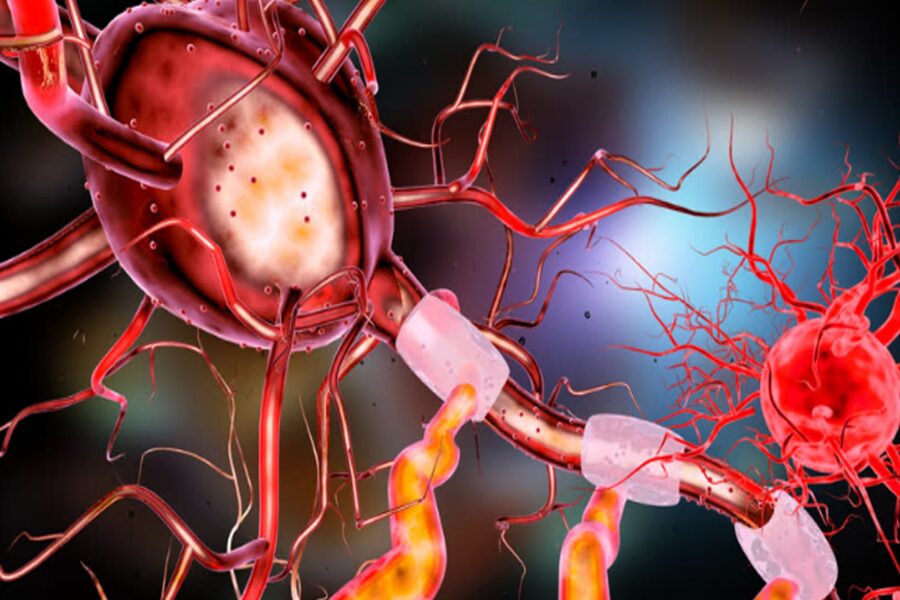
The PNS and the SNS are opposing forces [3] — they are to supposed to work together.
Researchers concluded that witnessing a compassionate act instinctively triggers the stress response because we recognise a person has a problem. But the act of kindness triggers the PNS which “calms our heart”. And that is when the tear ducts open.
So the PNS and SNS don’t actually work together, they belong to the same system of emotional processing at different stages of the process.
Crying is the relief from stress.
But that doesn’t explain why I feel sad watching movies.
Sadness is an emotional state that is associated with a source of pain. It is thought that sadness emerges because we are devoid of “any real love, meaning or truth.”[4]
So you could say that sadness is a result of a lack of love or emotional well-being, a lack of connection in relationships or interests you are passionate about. Feelings of rejection and abandonment are typically sources.
On the flip side, researchers have shown that acts of kindness are good for emotional well-being [5]. And that acts of kindness come from a love-based centre.
That would indicate that people that feel sad watching movies are moved by acts of kindness because that’s what they yearn for in their own lives.

In his insightful book, Freedom, Australian biologist, Jeremy Griffith shows that humans have an innate biological capacity for love, kindness and compassion. This is what a newborn baby instinctively expects to receive.
Griffith argues that the way we live our lives is a counter-balance to what the human condition is actually designed to need. Children, teenagers and adults that do not receive the unconditional love we need to nurture emotional well-being, feel bad, rejected and worthless.
This generates feelings of sadness, loneliness, anger, frustration – and critically, the feeling that you are being criticised (for not being good enough).
The harsh reality is that children that feel they are not loved mature into adults feeling unloved, unworthy and alienated. The resulting personality is what Griffith describes as “a narcissistic power addict” or an individual that is “psychologically crippled.”
We could go much deeper into both types of these personality types but for the sake of brevity, the narcissistic power addict develops the mental attitude that they must win at all costs.
Narcissists have also been shown to lack empathy and altruism [6]. Narcissists probably don’t cry at films.
Individuals that are psychologically crippled are fragments of what they could be. They have no confidence, low self-esteem, and very little if any fight in them.
Children that did not receive the love or emotional support humans are innately designed for, tend to become adults that are thoughtless, inconsiderate and preoccupied with themselves.
Simply put, we are cut off from ourselves to protect ourselves from being utterly consumed by our own pain.
“The child has no choice but to give in to that criticism and conclude that they are indeed worthless and bad. And then, to cope with that terrifying, absolutely unbearable conclusion, all the child can do is determine to never again allow their mind to connect with that conclusion that they are an unlovable, bad person, and since that core issue of their worthiness is where their true self is preoccupied, avoiding that issue amounts to separating or dissociating or splitting off from their true state and thus true self. This is the split, false, psychologically crippled state [most of us struggle with]. If, however, the evidence that they are an unworthy, bad person is immense but not quite overwhelming the child will be stuck in a lifelong battle to avoid surrendering to the psychologically crippling conclusion that they are an unworthy, bad person. And that is where power addict lives – stranded in that state of terrible fear that they are unworthy, fighting with all their might to ‘stay in their feet’ and defy that implication.” [7]
~ Jeremy Griffith, Freedom (p.601-02 par 1008).
The psychiatrist Frank Lake noted that children that felt criticised still feel they are under attack as adults. When we feel the world is against us, we become defensive and – attack back.
This attacking back surfaces as hate or contempt towards others, a self-induced sense of ‘I’m better than you,’ and a false sense of pride built on the premise of material resources.
And there’s yet another division in society which breeds conflict. People with less feel envy and resentment toward people with more.
But the feelings you experience toward the outer world are a reflection of how you relate to your inner world!

The division of mankind is actually the division of the individual psyche expressed outward into the physical world. Logically, the self-absorbed individual will blame anything and anyone other than themselves.
Modern science is showing us why we are breeding hatred. It’s because we have not, or are not, experiencing the love we need to function as healthy, stable and balanced humans.
But what has all this got to do with empathy, kindness and feeling sad watching movies?
So far science has established the psychological trauma we experience during the course of our lives cuts us off from our True Nature or “soul”. I can see how this is true from my own experience.
The fancy word for it is called dissociation.
There are varying degrees of dissociation. The most extreme is dissociative identity disorder in which the individual develops one or more other personalities they have no control over. Carl Jung described this as ego-possession.
“One of the most important changes of internal structure is the phenomenon of possession: some content, an idea or a part of the personality, obtains mastery of the individual for one reason or another. The contents which thus take possession appear as peculiar convictions, idiosyncrasies, stubborn plans, and so forth. As a rule, they are not open to correction….Possession can be formulated as the identity of the ego-personality with a complex.”
~ Carl Jung, The Archetypes and the Collective Unconscious
This can happen in children that experience a tragic trauma such as abuse, or an accident in which the brain shut down in order to protect their emotional well-being.
But you don’t have to be a witness to a major tragedy to experience trauma. The developing child of a brain experiences trauma for the most innocuous of reasons.
Mind.org in the UK says that everybody has some form of disassociation following a trauma. For most of us, it is the trauma of being criticised or reprimanded as a child.
Here we come back to our innate understanding of unconditional love. The first time we do not receive unconditional love as a child it comes as a shock to the system. We experience trauma and consciousness becomes “dissociated” or “split off”.
Like a broken cable, your neurones are not able to process and send all the information it receives. The central nervous system only processes what the brain associates with.

You can see how easy it is for the message that you are loveable, you are worthy can easily get buried in the unconscious.
When you are starved of unconditional love over a prolonged period of time, the program that you are not loveable; you are not worthy of love; you do not belong; you are not good enough etc becomes a concrete reality.
The subconscious then finds ways to validate these feelings; including feeling sad watching movies.
All the above are limiting beliefs, of course – but beliefs all the same. To a child’s undeveloped mind that expects unconditional love, the realisation that they are not worthy of love is a traumatic experience.
Oh yes, this is how easily we are traumatised in childhood. The brain’s way to cope with the stress of realising we are not worthy is to dissociate from the experience.
And this is where the “splitting off” of consciousness [8] begins. As we experience life, this fragmentation can get worse and eventually becomes neurosis. Then psychosis. But it can also be repaired depending on your experiences in life.
My formative experiences in life were one of feeling unloved, unworthy and alienated. This deepened in my teenage years when I also felt criticised and rejected by my peers. At school, I often felt a deep sadness accompanied by a sense of I don’t belong to this group of people.
Sadness is programmed into my subconscious because that is the experience I lived. Even when the experiences we have as children are false truths and limiting beliefs, such as ‘I am unloveable,’ the program becomes imprinted on your subconscious as though it were an actual Truth.
“Everything that has happened to you happened because of thoughts impressed on your subconscious mind through belief.”
~ Dr Joseph Murphy, The Power of Your Subconscious Mind
So this is why I get sad watching movies. I recognise the pain other people experience because of my own unresolved pain.
That’s different to crying at movies because you have empathy. Some empathetic people don’t feel sad watching movies because they are able to regulate their emotions.
Hey, guess what, your subconscious regulates your emotions [9]. So crying and feeling sad when watching movies depends on your programming, and not necessarily a personality trait.

Emotions are typically triggered by whatever you’re experiencing at that moment; but emotions are essentially memories of the past. They are coded in neurones [10] and wired in synapses.
So if you cry at films, you may also be carrying sadness in your subconscious programming as well. Which also probably means you don’t feel loved, worthy or have a sense of belonging.
Somewhere along the line, there has been a disruption to your innate need for love that has never been repaired. The empathy you feel for other people is because that’s how you feel you have been treated.
You’re in pain.
As an adult, I have struggled with my ability to love – even though I am altruistic, empathetic and compassionate, falling in love has been problematic.
Moreover, I don’t fall into the category of a narcissistic power addict nor would I say I am a psychological cripple. So the science of sadness is confusing me, but it makes sense when I relate my condition to subconscious programs.
Having said that I can admit to being both a narcissist (not a power addict) and a psychological cripple. I lived with depression for almost 30 years so maybe there is some residue I haven’t cleared yet. If the science is right.
What I do know is that depression can be the result of a disrupted ability to love. And lack of love breeds sadness. What’s more, a 2020 study[11] found that people with depression choose to be sad as a ‘self-verifying function”.
In other words, the ego identifies with depression as your condition and seeks to find activities to support the way you feel (play sad music, wallow in sad thoughts, curl up in a ball etc). The ego remember is responsible for your emotional survival.

This is subconscious programming at play. Moreover, this is a form of ego-possession; when the ego identifies with unconscious forces it is possession.
Science also shows us that individuals that were raised to feel loved, on the other hand, tend to be emotionally stable, have a strong sense of self-worth and are more inclined to provide acts of kindness without wanting anything in return. This also makes perfect sense.
“So love is cooperative selflessness – and not just selflessness but unconditional selfishness, the capacity, if called upon, to make a full, self-sacrificing commitment to the maintenance of the larger whole…And since love means unconditional selfishness, love is the theme of existence – it is the meaning of life.” [12]
~ Jeremy Griffith, Freedom
Griffith states that infants that receive the love and attention humans innately need are “indoctrinated with unconditionally selfless love, thus allowing it to grow up to behave selflessly.”
Harry Prosen, an eminent psychiatrist and Griffith’s professor, also identified that there is “a need for empathy/love/unconditional selflessness in the lives of highly social mammals and how psychologically devastating the effects are of not receiving it.” [13]
Some of the devastating effects of not receiving love indoctrination are to become aggressive, defensive, angry, frustrated, sad and a spectrum of other unhealthy emotions whenever, we, or rather the ego, feel threatened.
I can relate to these impulses as well – in my narcissistic/psychologically crippled days. They don’t surface much anymore, however. Just sadness when watching movies.
Coincidentally, when I say the ego feels “threatened”, I mean, when the ego feels its emotional survival is at stake. For example, if you choose to change a habit, the ego will resist because that’s not what you normally do to survive the day.
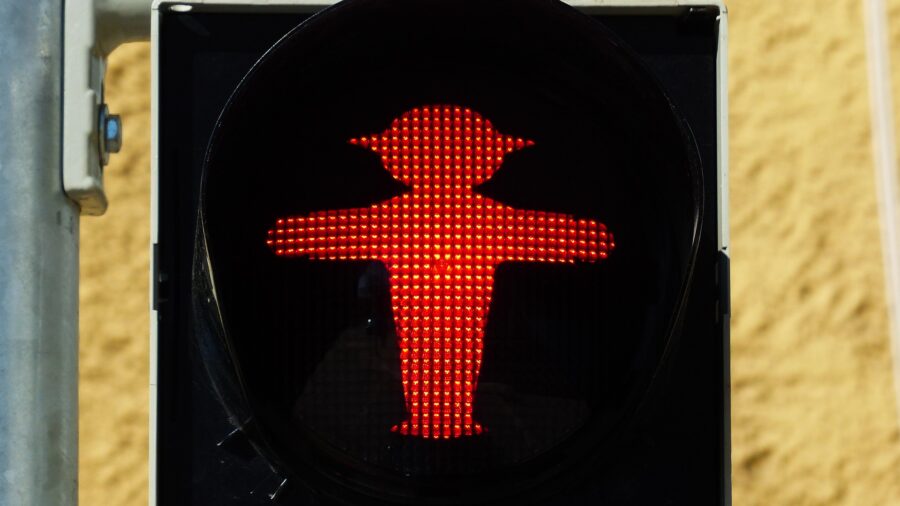
The problem is the ego doesn’t recognise the difference between what is right and what is wrong. It only knows what you have done before – the tasks it is programmed to perform.
Whether you experience happiness or joy or depression and sadness is neither here nor there to the ego. It only knows what you are programmed to feel even if it doesn’t know what the experience of these feelings means to you. In this sense the ego is unconscious.
So what does this mean?
Remember the study that showed empathetic responses are activated by the parasympathetic nervous system and the sympathetic nervous system?
The nervous system is the source of your emotion and thus how you feel.
This shows the ego only knows the information it is fed through the biological process of chemicals that are triggered in relation to the experience you are having at any given moment.
In other words, the ego responds to your subconscious programming which is stored in your central nervous system.
The subconscious mind is the nervous system.
Negative emotions such as sadness, anxiety, anger, depression etc are classified as neuroticism [14]. But a growing body of evidence supports the notion that neuroticism can be treated by adopting a different mindset to life.
This primarily involves learning to regulate your emotions and respond to your environment in a different way. There are many tools you can use for this such as reframing, acceptance and positive self-talk.
An ongoing practice “neurotics” (including myself) have to engage in is nurturing, compassion and self-care. Unconditional love is stymied by our need to prove our self-worth.
However, once you understand that the reason for feeling sad, upset, angry and isolated is because of a simple misunderstanding your childhood brain had all those years ago that resulted in the splitting off of consciousness, it’s easier to overcome the negative emotions programmed in your subconscious.
All you need to do is adopt a different response to your environment. Eventually, your subconscious programs are upgraded with new information…which comes from a different type of neurotransmitter – otherwise known as chemical messengers (because they carry information).
The chemical messenger you want to release to overcome low moods is oxytocin. The neurotransmitter is released during moments of bonding.
Neuroscience shows us that the ‘love hormone’ oxytocin plays a key role in:
“…childbirth, breastfeeding, increasing contractions during labour and stimulating the milk ducts. It is also released in response to positive physical contact – hugging, kissing, sexual intimacy and even petting animals – as well as through positive social interactions.”
~ Jo Adetunji, The Conversation
The 2015 study researching moral elevation mentioned above also pointed towards oxytocin as a signal for altruism describing it as the “tend and befriend” hormone.
A study at Oxford University in the UK also found that shared emotional experiences enhance social bonding. Watching traumatic films arouses your survival instincts – which incidentally depend on social bonding.
And we’re back to the ego’s function as the guardian of your emotional survival.

Oxytocin, therefore, has a critical role to play in the way we feel. It is associated with heightened feelings of empathy and compassion. But oxytocin also surfaces as sadness when you’re watching movies.
Researchers [15] have linked this to traumatic experiences from your past. Oxytocin levels are high under stressful conditions, such as social isolation and unhappy relationships.
If trauma is programmed in your subconscious, your thoughts, actions and emotions are creating the negative events and feelings you experience.
“Every one of our thoughts, good or bad, becomes concrete, materialises, and becomes in short, a reality. We are what we make ourselves and not what circumstances make us.”
~ Emile Coue, Self-Mastery Through Conscious Autosuggestion
The cause of the disturbance could be for any number of reasons. For example, perhaps you were bullied or felt isolated at school, or your older sibling ridiculed you and treated you like a rag doll.
Whatever, the reason for your sadness, you feel this way when you are triggered by events in a film, book or news item. But because it’s part of your subconscious programming, these triggers can be used to instigate your healing process.
When feelings of sadness [16] surface when you’re watching movies, use them to consider why you are still carrying sadness. Negative emotions are a signal for you to pay more attention to what lies behind your emotional responses.
The discoveries of modern medicine reflect the deeper themes of ancient myth. Okay, that’s not an idea that will catch on with everyone, but I’ll give you an example.
In ancient, Homer’s Hymn To Demeter describes the journey of the self reconnecting with the self. The story features the goddess Demeter’s search for her abducted daughter.

Demeter was associated with agriculture in ancient Greece — a symbol of nurturing, regeneration and fertility. She is recognised as a nourishing and nurturing earth mother; the provider and regenerative energy that enables life to flourish.
On a psychological level, the earth mother teaches us the positive effects of unconditional love and emotional well-being are born from taking care of yourself and others – nurturing, nourishing and altruism.
“Nurturing is crucial in producing a sound, functional human.”
~ Jeremy Griffith, Freedom
When Demeter learns of her daughter’s disappearance she is frantic; you might even say neurotic. Throughout Homer’s Hymn To Demeter, we see her descend into worsening conditions of neuroticism; anger, grief, sadness, depression and social withdrawal.
Demeter is only released from her reverie when she is reunited with Persephone. And here’s the kicker. Persephone is identified as Demeter. They represent the same person. In Attica, there is a picture that shows the two women as sisters.
Scholars believe the Hymn To Demeter describes the changing of the seasons, or cycles of life. It actually describes the transformation of consciousness from a state of depression to the positive mental state of a functioning human being.
I have explained the symbolism of Demeter’s journey in this article.
Essentially, the Hymn To Demeter is one of many myths that describe how reconnecting with the Self — or the re-membering of dis-membered consciousness — is the process of healing.
We also find in the Greek myth of Narcissus that narcissism is not an excessive indulgence but the yearning to be loved. It is only when Narcissus sees his reflection in the water (the unconscious), that he recognises the fulfilment of self-love.
Do you want to know more?
References
[1] If you cry while watching movies, it is probably a sign of your emotional strength
[2] Autonomic and prefrontal events during moral elevation; Piper Saslow, Saturn (2015)
[3] Neuroanatomy, Parasympathetic Nervous System; Tindle, Tadi (2022)
[4] Jeremy Griffith, Freedom
[7] Jeremy Griffith, Freedom (p.601-02 par 1008)
[10] Why are Memories Attached to Emotions so Strong? Columbia University Irving Medical Center (2020)
[11] Jeremy Griffith, Freedom (p.187 para 321 and 322)
[12] Ibid (p262 par 456).
[13] Neuroticism and Psychopathology (2001)
[15] Sadness, the Architect of Cognitive Change; (L Levine 2018)
A study of 500 participants in 2013[1] investigated the mental health of individuals classified as ‘self-fulfilling’ and ‘self-destructive’ – the classic polarities of the Lover archetype.
The researchers concluded, “that self-acceptance and environmental acceptance might enable individuals to go from self-destructive to a self-fulfilling state that also involves harmony in life.”
Higher levels of self-acceptance are also known to boost self-esteem. As a matter of fact, accepting your strengths and weaknesses sets you on the path to nurturing your self-esteem (MacInnes, 2006)[2].
Self-acceptance is defined as “an act of embracing all of your attributes, whether mental or physical, and positive or negative, exactly as they are” (Morgado, Campana, & Tavares, 2014) [3]. It includes acceptance of your body, your quirks, attitudes beliefs and emotional status.
Ultimately, the power of self-acceptance is to protect you from feeling hurt or inferior when you receive negative criticism from other people or if they doubt your ability to succeed in areas of life where you are more than capable of achieving success.
And how many times have you allowed the feeling that you’re not good enough to stand in the way of taking action? How many times have you allowed your fear of failure to stop you from even trying?
When you accept you are not perfect (who is), and that you are allowed to make mistakes (because you’re human) and that you have flaws (you can probably improve), you will not be defined by feelings of inadequacy.
Consequently, you are mentally equipped to live life on your own terms.

Whilst researchers have shown that self-acceptance helps to nurture self-esteem, there is a significant difference between the two.
Self-acceptance, as mentioned above, is how you see and think about yourself. It is an assessment of your strengths and weaknesses and embracing both. You simply accept the way you are in that moment (though the goal should be to improve your weaknesses and build on your strengths).
Self-esteem, on the other hand, is defined by how you feel about yourself. In other words, self-esteem has an impact on how you physically experience life from moment to moment.
It has been pointed out that some people that struggle with self-acceptance issues are still successful. And whilst achievements can bolster your self-esteem, it’s short-lived. Srini Pillay, MD, writing for Harvard Health Publishing points out:
“That’s because achievement is a poor substitute for intimacy.”
~ Srini Pillay
When you accept yourself for who you are, you begin to embrace your authentic self and learn how to love yourself. You also have more capacity to accept other people for who they are and have a higher tolerance threshold towards people who are different.
A growing body of research clearly links high levels of self-acceptance with positive emotional well-being [4] and improved mental health. Self-acceptance can also shield you against psychological distress such as stress, anxiety and depression.[5]
When you practice self-acceptance and nail it, you care less about what other people say to you – even if they are only joking, When we don’t accept ourselves, we can take the slightest criticism as a personal affront.
Subsequently, you are better equipped to regulate your emotions and be your authentic self without worrying about what others think of you. In other words, you give yourself permission to express yourself rather than weighing yourself down with assumed limitations and self-enforced boundaries.

It’s natural for everybody to have weaknesses in some things. We can’t be good at everything, but we can improve at most things. This is particularly the case when it comes to integrating the parts of ourselves that have been resigned to the unconscious.
A lack of self-acceptance is typically the result of repressed or suppressed consciousness; aspects of ourselves that we came to believe are undesirable. Oftentimes, the aspects of true nature that lurk in the shadows make us better people.
When we continue to ignore, hide, neglect and reject our shadow, we develop neurosis and psychosis. Accepting aspects of our shadow nature is the first step towards healing repressed consciousness and enabling the self-ego axis to live in harmony; and inner peace.
“When I examined the way of development of those persons who quietly and, as if unconsciously, grew beyond themselves, I saw that their fates had something in common. The new thing came to them out of obscure possibilities either outside or inside themselves; they accepted it and developed further by means of it. It seemed to me typical that some took the new thing from outside themselves, others from within; or rather, that it grew into some persons from without, and into others from within. But the new thing never came exclusively either from within or from without. If it arose from outside, it became a deeply subjective experience; if it arose from within, it became an outer event. In no case was it conjured into existence through purpose and conscious willing, but rather seemed to be borne on the stream of time.”
~ Carl Jung, Commentary on The Secret of the Golden Flower
In the 1930s, the controversial Austrian doctor of medicine and psychoanalyst, Wilhelm Reich also noted that unconscious content his patients were hostile towards formed the basis of neurosis[6].
Subsequently, the inner resistance causes an internal reaction whereby man becomes “reactively and inwardly divided against himself.”[7]
One area of research into the relationship between self-acceptance and emotional response found that people who have mastered emotional regulation are 6.5x more likely to be in the top 50% of resilience to criticism.
On the flip side, people who are unable to control their emotions are prone to emotional outbursts. Elevated levels of stress, anxiety and anger – emotions that are triggered when you are criticised – lead to a mental imbalance.

A lack of self-acceptance limits your capacity to protect your emotional body from criticism. This can damage your sense of well-being, your pride and your relationships.
People who have low levels of self-acceptance are also more likely to ruminate[8] and focus on their negative aspects. Focusing on your negative aspects dents your self-esteem and draws negative emotions.
Evidence indicates there is a direct link between low levels of self-acceptance and various classifications of mental illness including:
Whilst the events that led to individuals suffering mental illnesses are different and highly personalised, there are patterns that enable us all to overcome personal insecurities.
The simple answer is childhood. Then adolescence – particularly peer pressure.
The seed to emotional insecurity, or repressed consciousness, typically starts with our parents or caregivers. For some people, it may have started with a teacher in the first few years of school. Adults have an unconscious knack of making children believe there is something acceptable about their behaviour.
To a child’s developing mind, something as innocuous as an adult saying, ‘don’t do that,’ ‘that’s not nice/good’, ‘stop that’ or ‘don’t be naughty’ can make them feel inadequate or unacceptable.
If this false belief is validated as the child continues to develop psychologically, the subconscious seed blossoms into a flower. Children that are reprimanded typically grow up to have a lack of self-acceptance and low self-esteem.
“Children that grow up with authoritarian parents… [can] have higher levels of aggression but may also be shy, socially inept, and unable to make their own decisions. This aggression can remain uncontrolled as they have difficulty managing anger as they were not provided with proper guidance. They have poor self-esteem, which further reinforces their inability to make decisions. Strict parental rules and punishments often influence the child to rebel against authority figures as they grow older.”
National Library of Medicine [9]
As ironic as it may sound, badly behaved children can be a good sign,[10] but it shows that are being authentic. It also means they are comfortable around parents and adults in general (see attachment theory). Misbehaving can actually be a positive sign the child will mature into an emotionally stable adult.
Children don’t know how to distinguish between their authentic selves (instincts) and their behaviour. They are simply driven to perform whatever action they feel like (although they do have a sense of what is right and wrong on a moral level).
But let’s say a child wants an ice cream but it’s almost time for dinner. A rational parent would refuse the request for ice cream. The child will either get angry, moody or whiney because they are not accustomed to being told ‘no’.
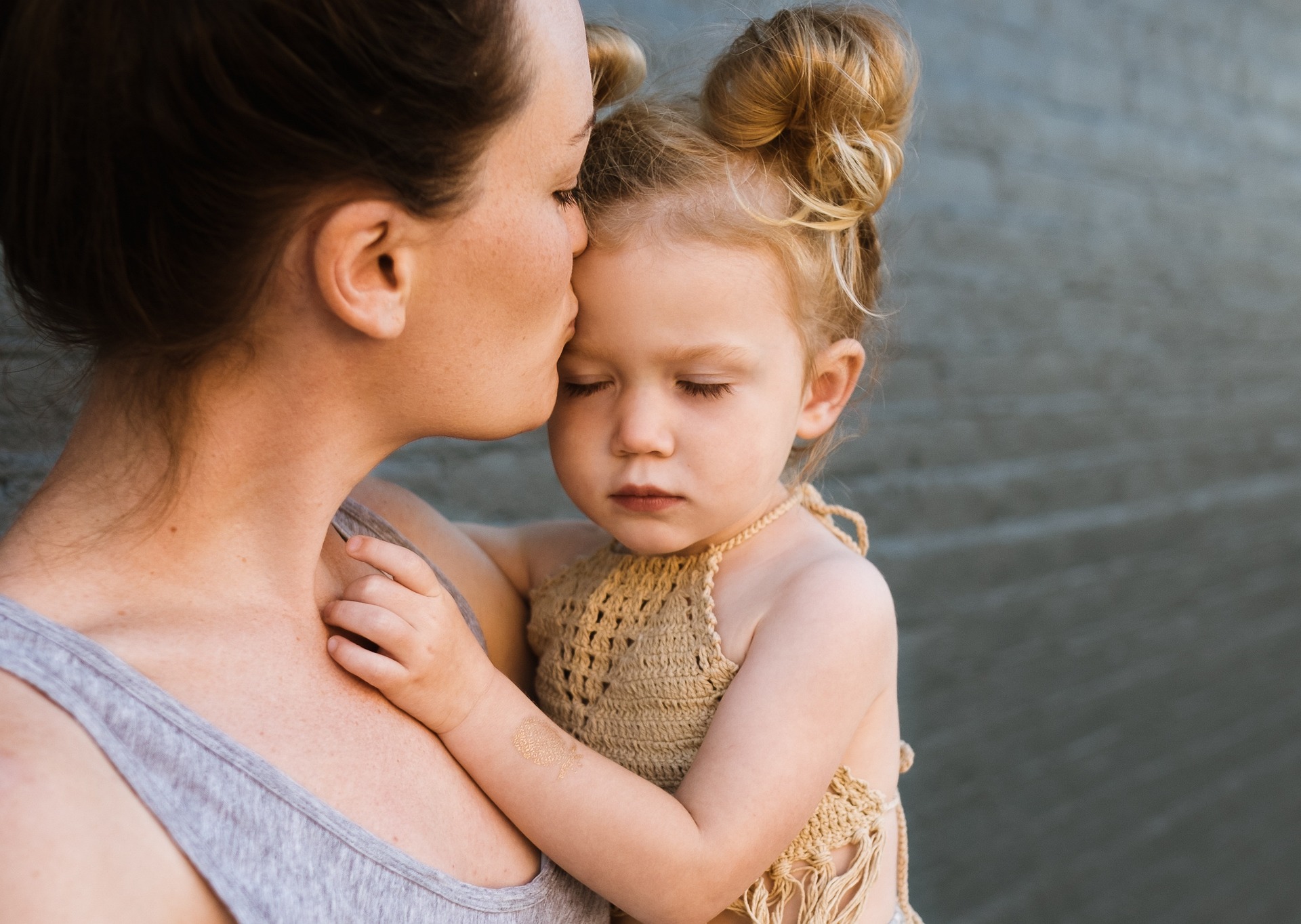
A parent who scolds the child in this situation is basically saying, your behaviour is not acceptable. The best approach is to sit with the child and explain that ice cream is a dessert and comes after the main course at dinner.
“Nurturing is crucial in producing a sound, functional human.”
~ Jeremy Griffiths, Freedom
The promise of ice cream settles the child down and also enables them to delay gratification. But more importantly, the child’s sense of self-acceptance remains intact.
When you accept yourself, the world accepts you. For you have no concern about what people think of you. You know the Truth.
“The sage accepts the world
As the world accepts the Way;
He does not display himself, so is clearly seen,
Does not justify himself, so is recognized,
Does not boast, so is credited,
Does not pride himself, so endures,
Does not contend, so none contend against him.
The ancients said, “Accept and you become whole”,
Once whole, the world is as your home.”
~ Lao Tzu, Tao Te Ching, Chapter 22
The goal of self-acceptance is to shift your perspective from “I don’t like this thing about me” to “there is nothing I can do about it right now, and I accept things for the way they are.”
When you accept who are and what you are in this moment, you trigger the recovery process for healing repressed consciousness and nurturing personal growth. Give yourself permission to be your authentic self.
Do you want to learn some effective strategies to integrate self-acceptance? Click here.
References
[1] The affective profiles, psychological well-being, and harmony: environmental mastery and self-acceptance predict the sense of a harmonious life; Garcia, Al Nima, Kjell (2013)
[6] Wilhelm Reich, The Function of the Orgasm
[7] ibid.
[9] Types of Parenting Styles and Effects On Children; Sanvictores, Mendez (2022)
[10] “How To Raise Kids Who Aren’t Assholes”; Melinda Wenner Moyer (2020)
Evidence shows that the first six months of life are critical in forming strong, and healthy attachments with family, friends and lovers in adulthood.
Being aware of your attachment style can help you to challenge your insecurities. The insights empower you to develop new patterns of attachment and nurture loving and fulfilling relationships.
Attachment theory primarily focuses on the connection between an infant child and the primary caregiver. This is typically the mother but, there is also a correlation between the relationships a newborn has with their father in the first years of life.
A child’s life is, of course, influenced by other people outside the parental dyad; siblings, grandparents, aunts, uncles, cousins, teachers and peers. And let’s not forget TV, of course, particularly Uncle Disney.
Whilst research shows that peers have a greater influence than our parents when it comes to patterns of behaviours and attitudes, how we interact with our peers (particularly during adolescence) is largely determined by the formative years of life.
Subsequently, the first part of your healing journey should start with identifying your attachment style. Attachment theory helps you to understand some of your behaviours and motivations in your relationships.
Attachment theory was developed by the British psychoanalyst, John Bowlby and the American-Canadian developmental psychologist, Mary Ainsworth.
Although Bowlby and Ainsworth worked independently of one another, they reached the same conclusion; a child needs to develop a close emotional relationship with at least one primary caregiver in the first six months of life – either a caring mother or a caring father; preferably both.

This has led psychologists to recognise that the emotional support we receive from our parents is important for children to develop the social and emotional intelligence we grow up with and often carry into adulthood.
Attachment is classified as a deep emotional connection that enables us to develop strong emotional relationships with people. The attachment style we develop as children often determines how we might function in our adult relationships; particularly intimate relationships (lovers and close friends).
When a child shares a strong emotional bond with their parents it builds a secure attachment. This makes them feel safe and gives them the foundation to build a positive worldview and a positive attitude towards life.
When children share a weak emotional relationship with their parents it leads to an insecure attachment. Individuals with insecure attachment styles are predisposed to develop insecure attachments in future relationships. Adults that fall into this category typically display a negative mindset and generally operate from a fear-based centre.
Parents can determine if they have a strong or a weak emotional attachment to their infant by the child’s reaction to them when they return from a period of absence (of a few hours or more). For example, an emotionally intact child will stop playing to greet their mother or father when they come home but then will return to playing.
A child with an insecure attachment will either ignore the parent and continue playing or greet the parent and may show signs of clinginess. Clinging means the child needs your attention to give them care, support and protection. These factors are a child’s fundamental need to develop emotional security. Here are some useful strategies.
Emotional responses are reactions to separation from a primary caregiver. When the emotional attachment between a primary caregiver is strong, we grow up to be positive and confident adults. We feel safe in the world and have the independence to explore the world and maintain emotional connections with others.
Adults that did not receive strong emotional bonding with their parents develop insecurity which could develop as anxiety and/or depression. Individuals that fall into this category display patterns of behaviour that are fuelled by a lack of confidence and trust. They may be reserved and avoid social interaction.
Bowlby identified four types of attachment:
You will have a secure attachment style as an adult if you were raised in a loving environment and attended to in good time by your mother (or other primary caregivers). Children with a secure attachment style feel comfortable around their parents and are more likely to tell the truth when they have been naughty or broke something in the house.
The behaviour of a child with secure attachment is generally good. You will have been obedient, reacted in a positive manner to parental requests, and explored your environment with confidence when your parents were present. When your parents were around your general characteristics would have been happy, secure and comfortable.

If you felt stressed when your parents were not around, like your first days at nursery, you would have immediately become restless, anxious and upset. But when either of your parents returned you would be happy again.
Secure children typically grow up to become secure adults (unless you experience emotional trauma and develop PTSD.) You have a positive self-image and show qualities associated with the healthy Caretaker archetype; empathy, trust, warmth, forgiveness and the capacity to set personal boundaries.
In an intimate relationship, you allow your partner to depend on you, but also depend on your partner when they need help or emotional comfort. It’s a two-way street without feeling the need to be a people-pleaser. Rather you are a person that pleases (healthy Lover archetype).
In other words, you can be dependent and independent in a loving relationship. This lays the ground for accepting your partner’s need to be alone without feeling rejected or lonely because they are not spending time with you.
When you have a secure attachment style, you can manage your emotions and communicate openly about your feelings. Although you’re typically sensitive and warm by nature, you’re not afraid to share how you feel even if this leads to a conflict.
Conflicts can actually make the emotional bond in a relationship stronger – plus you learn something about yourself and your lover also understands your emotional needs (and may even learn something about themselves).
If your parents were unavailable to you as a child – either physically or emotionally – you probably developed an attachment style that is categorised as an anxious-ambivalent attachment, also known as anxious-resistant insecure attachment.
This attachment style typically develops if your parents were inconsistent in their behaviour towards you. For example, sometimes they would engage with you and respond to your needs, but other times they would be unavailable or distracted and waved away when they were preoccupied.
Children that fall into this category seek to control interactions with their parents to retain their attention. They are generally reluctant to independently explore their environment when their parents are present and when they are separated from their parents become extremely distressed.
When the child with anxious-ambivalent attachment is reunited with their parents, they can become angry, resist contact and refuse to settle down. This is because of inconsistent and unpredictable communication that makes the child feel rejected, unloved and uncared for.
As adults, people in this category have low self-esteem. If you crave closeness and constant reassurance to feel accepted and loved, then you have an anxious-ambivalent attachment style. You typically yearn for an intimate relationship to fill the emotional void that has been left by your lack of inner security and the capacity to feel comfortable in the company of others.
Your negative self-image and lack of self-acceptance can damage relationships. Self-doubt plagues you with thoughts about whether your partner loves you, or whether your friends respect you. You live in constant fear of rejection and can appear needy.
When you do feel rejected your behaviour is often unpredictable and sometimes erratic (unhealthy Hero). You’re inclined to do something stupid or seek comfort in addictive or destructive behaviour.
Adults with an anxious resistant insecure attachment style tend to be clingy. You take things personally when your partner is in a mood and have a hyperactive emotional status. Your insecurity and erratic behaviour often push your partner away.
Ultimately, the fear of rejection, anger and pain has a negative effect on your intimate relationships. Your irrational fears of rejection, anger and pain become a self-fulfilling prophecy.
You can determine if you have an anxious-ambivalent attachment style if you show symptoms of being overly controlling, angry and blaming others rather than accepting responsibility for your own actions (unhealthy Hero).
You also tend to be argumentative and have low personal boundaries (people pleasing, allowing yourself to be bullied or dominant, feeling guilty when you do things for yourself etc).
The anxious-avoidant attachment style typically surfaces in adulthood if you were not so close with your parents in during your formative years. Children that are disciplined for expressing emotions that are considered “unacceptable behaviour” learn to suppress their emotions – which can have devastating consequences. This is tantamount to emotional abuse.
If you were often reprimanded and disciplined as a child, you probably didn’t feel secure in the company of your parents. You may have even been fearful of them. If you fall into this attachment style, you probably felt more comfortable and less distressed when your parents are not around (or at least the parent you feared). Children in this category tend to ignore their parents and may seek out ways to avoid them as they get older.
People that identify with an anxious-avoidant attachment style typically grow up to be emotionally withdrawn. You tend to avoid emotional connections, don’t feel comfortable getting too “close” and are afraid to commit to an intimate relationship. You have a negative self-image and tend to avoid social activities and intimacy. You typically prefer to engage in solitary pursuits.

However, withdrawing from society also means you don’t give yourself the opportunity to develop positive emotional management skills. Subsequently, you are more inclined to be critical, and intolerant, stick to concrete beliefs and ensure pain or hardship without expressing your feelings to others (unhealthy Sage).
From a positive point of view, this attachment style prompts you to be self-sufficient. You are able to handle a crisis with aplomb and can take charge in difficult situations – provided you are not at the centre of the conflict. In that scenario, you’re more likely to run away (unhealthy Creator).
Self-sufficiency, however, can backfire. If you prefer independence over intimacy, you are predisposed to rejecting intimate relationships because you fear abandonment and rejection. You are uncomfortable or feel overwhelmed by emotion when you do make a connection with somebody.
In a relationship, avoidant types do not rely on other people and do not allow your partner to be dependent on you. You avoid any sort of communication that involves expressing how you really think and feel and avoid conflict by isolating yourself and pretending that nothing happened (unhealthy Creator).
However, at some point, your emotions have to be extinguished because suppressed emotions cannot be retained internally forever. If you are prone to outbursts, especially when you’re stressed, your attachment style is anxious-avoidant. You need to learn to be comfortable in expressing how you feel about circumstances that arise in your relationships.
Adults with a disorganised attachment generally have or had, parents that were inconsistent in their behaviour towards you. This causes mixed feelings for your parent whom you see as a source of comfort and fear. The fear is due to maltreatment; usually through physical and emotional abuse. This causes a form of severe emotional insecurity.
Individuals that fall into this category of attachment mostly feel unhappy, dazed and disoriented. You do not feel secure in the presence of your parents and often display disorderly behaviour.

Adults that develop a disorganised attachment style have a negative self-image, lack trust in others and typically end up in a toxic relationship. They are also insensitive, argumentative and aggressive. Research shows that in many cases, abused children develop into adults who abuse or will be abused as an adult.
Your desperation for emotional insecurity can make your behaviour chaotic. Because you’re unable to regulate your emotions, your relationships are often dysfunctional and turbulent. You struggle to adapt to intimate relationships because you’re emotionally detached and uncomfortable with closeness.
Disorganised attachment often leads to anti-social behaviour and narcissistic tendencies. Your inability to show empathy or remorse can make you feel even more detached from society. People with this attachment style have a higher risk of indulging in substance abuse, criminal behaviour and depression.
By understanding your attachment style, you can work at understanding how your repressed emotions impact your current relationships and lifestyle. If you have any of the three insecure attachment styles, seek professional help and delve into your unresolved emotional issues.
The archetypes tool developed by Master Mind Content can help you do this because it highlights healthy and unhealthy behaviours you either need to transform or integrate.
When you bring unconscious content into conscious awareness, you will be able to work on improving the interactions you have with your friends and partners. Self-knowledge empowers you to improve your emotional connection with the people closest to you, nurture meaningful relationships and subsequently develop a secure attachment style.
But its original interpretation is quite different. The swastika’s true meaning is given as being “conducive to well-being” or more often with “good luck” and “prosperity”.
The modern English word has roots in the ancient Sanskrit, su, meaning good and asti, meaning to prevail.
The origins of the swastika have been traced back as far as the 13th BCE. Britannica Encyclopaedia reports:
“The earliest known use of the swastika symbol—an equilateral cross with arms bent to the right at 90° angles—was discovered carved on a 15,000-year-old ivory figurine of a bird made from mammoth tusk.”
To this day, the swastika is an auspicious symbol in Hinduism, Jainism and Buddhism. The first use of the word was in Panini’s Ashtadhyayi sometime between the 4-6th centuries BCE. Scholars can’t agree on more accurate dating.
What we do know is the swastika was adopted by Europeans and is found all throughout Eurasia and as far as Italy and Spain.

The symbol has also been discovered in South America as evidenced by the vase in the feature image of this page. That vase dates back to the early Sican civilisation (750-1375) in Peru.
The symbolic meaning of the swastika remained a symbol of prosperity into the early 20th century before it became demonised.
To understand the true symbolic meaning of the swastika, we should analyse the meaning given to it by the ancient civilisations of the Indus Valley.
The swastika is believed to have been a symbol of peace, fertility and health. When the arm in the top-right is facing towards the right, or east, (卐), the symbolic meaning of the swastika is symbolised by Surya, the sun god who represents good luck and prosperity.
A deeper, esoteric meaning of the sun is vital energy – or as the eminent psychoanalyst Carl Jung describes it – “libido”.
Although libido is most often related to sexual energy today, its true meaning is the psychic energy that emerges from the subconscious into the conscious mind:
“To anyone who understands libido merely as the psychic energy over which he has conscious control, the religious relationship, as we have defined it, is bound to appear as a ridiculous game of hide-and-seek with oneself. But it is rather a question of the energy which belongs to the archetype, to the unconscious, and which is therefore not his to dispose of. This “game with oneself” is anything but ridiculous; on the contrary, it is extremely important. To carry a god around in yourself means a great deal; it is a guarantee of happiness, of power, and even of omnipotence, in so far as these are attributes of divinity. To carry a god within oneself is practically the same as being God oneself….”
~ Carl Jung, Symbols of Transformation
In Hindu iconography, Surya is pictured carrying water lilies which depict the nurturing nature of the sun. Without the sun’s vital energy, Mother Earth would not receive the nourishment she needs to grow her flowers, trees and plants.

Here we see how the swastika is used as a symbol of fertility and peace. The harmony between the sun and the earth is central to life, positive growth and evolution.
“Libido” is also symbolised by the sun.
The psychologist Herbert Schilberer described libido as “expressing emotions or using energy by doing and activity to create something”.
From a psychological standpoint, the sun represents vital energy which emerges in your conscious awareness. It is your experience of life and the energy that sinks into your subconscious.
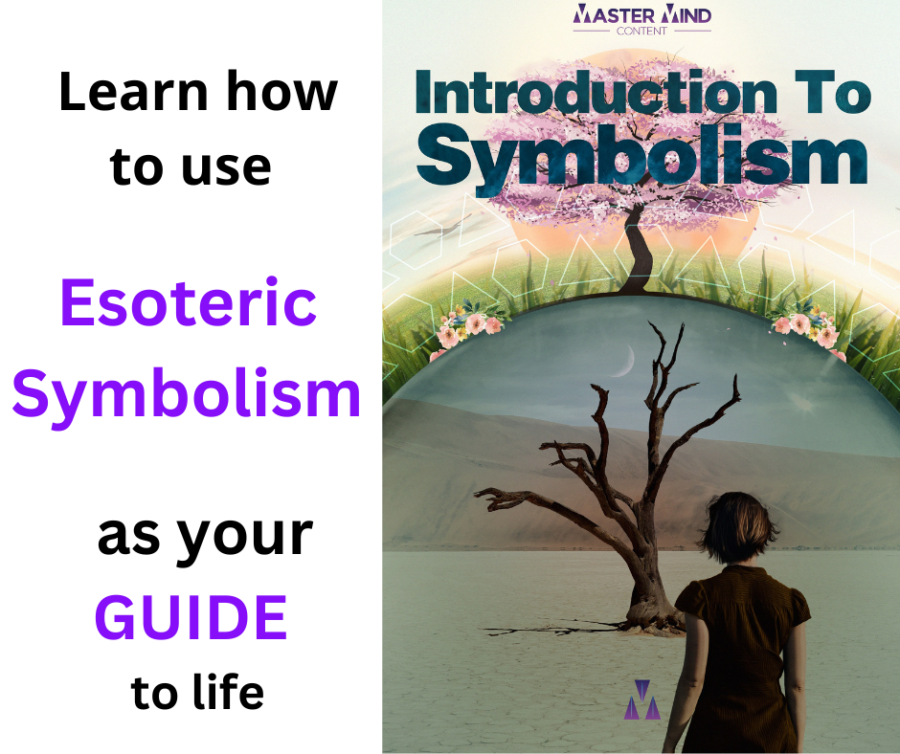
Click here to download your FREE copy of the Introduction to Symbolism Guide
This is vitally important to know because your quality of life is largely determined by subconscious programs. Psychologists say that 90-95% of our decisions surface from the subconscious – the habitual mind.
Your subconscious mind is programmed by your experiences in life, your environment and your self-talk; desires, attitudes, beliefs, aspirations, self-image etc.
You must understand that your subconscious mind responds to what you instruct it through the conscious mind. When you know this it becomes clear that you are in control of how you feel, how you experience life and how you create your experiences in life.
“Your subconscious mind behaves to the nature of your thoughts. You think with your conscious mind, and whatever you habitually think sinks down into your subconscious mind, which then creates according to the nature of your thoughts. Your subconscious mind is the seat of your emotions. It is the creative mind.”
~ Dr Joseph Murphy, The Power of Your Subconscious Mind
This is how good will prevail.
Before good can prevail, you need to eliminate the bad. Bad is also referred to as “evil”, “darkness”, “demons”, “poison” and the vast array of fierce animals that kill in mythology.
In psychological terms, “bad” is the unseen, or unconscious energies, that cause problems in your life. Bad is a psychological complex, for example.
When you transform subconscious programs that are “bad” you can integrate archetypal energies that are “good”. These are the energies that enable you to grow – to become fertile, develop inner peace and have a fulfilling and fruitful life in good health.
When the top arm of the swastika is facing left, or west (卍), the symbol is called sauwastika, and reflects the attributes of the goddess Kali.

Kali is well-known as the Hindu goddess of death. But it is the death of the programmed ego that she destroys.
In other words, this energy eliminates old patterns of behaviours, attitudes, desires and intentions that do not serve your best interests or the best interests of others.
Old patterns of behaviour that are programmed in the subconscious have to die before they can be reborn. I explain this in more detail in the symbolic meaning of the Latin Cross which shares similarities with the symbolic meaning of the swastika.
It is only when you eliminate the bad energies in your subconscious that good (life experiences) can prevail.

Click here to download your FREE copy of the Introduction to Symbolism Guide
Dr Mohieldin Youssef, the lead researcher said “The presence of the gene helps with stress-resilience and if it’s removed, there’s an increase in depression, fear, and anxiety.”
Tob is named for the Japanese verb “tobu,” which means to fly or to jump. The gene is also known as the “Jumping Gene” because protein levels jump in activity when the cell is exposed to a stimulus.
For example, protein levels in the Tob increase when stimulated by acute stress. Youssef came to this conclusion after dropping mice into a bucket of water.
Mice with the Tob gene swam around looking for ways to escape. Mice that were born without the Tob gene simply floated on the surface of the water. Researchers link giving up with depression.
What we are seeing here is the classic fight-flight-freeze response which is associated with neural circuits in the hippocampus, prefrontal cortex, amygdala, and hypothalamus.
The brain utilises several mechanisms to cope with psychological stress. At the molecular level, acute stress induces transcriptional and translation responses.
When there is a defect in the genes, the mechanisms do not function as they’re supposed to. In the Japan study, it was identified that a lack of Tob gene activity in the hippocampus increased levels of fear and anxiety.
The researchers also discovered that mice without the Tob gene “didn’t seem to learn.” When these mice were placed in an environment that aroused fear but ultimately turned out to be safe, the mice with inhibited Tob cells continued to show symptoms of fear.

Using MRI technology, researchers were able to detect that stress resilience was absent when there was no connectivity between the hippocampus and the pre-frontal cortex.
When the jumping gene is stimulated in the hippocampus, fear and depression levels were regulated. However, the mice still had anxiety.
However, when the Tob cells are activated in the rest of the body, the mice were not anxious.
This shows that the hippocampus has a strong connection to fear and depression, but not anxiety as previously suspected.
The researchers concluded that Tob also participates in the creation of neurones which impact behavioural patterns and traits.
A previous study indicated that anxiety might be regulated by the hippocampus and the amygdala. The Japanese study eliminates the hippocampus plays a role in anxiety but it does play a role in fear and depression.
The hippocampus is responsible for memory formation, spatial formation and navigation. This enables us to encode the environment in something like a cognitive map and remember where things are and what happens to us.
In short, it decodes your experiences in life and creates programs that are then stored in the subconscious.
There are strong links to show that the hippocampus is responsible for the organisation and storage of new memories, in particular, facts and events. But it also plays a role in connecting sensations and emotions to experiences which then become attached to the memory.
Moreover, the hippocampus is one of the few parts of the brain where neurogenesis occurs – the new formation of neurones. However, the hippocampus does not retain these neurones. They are transferred to long-term storage centres.
Neurones shape brain function and transfer information to cells. When cells receive the same information, their long-term memory is reinforced. As neuroscientists say, the more a neurone is fired, the more it is wired.
It is the information in these cells that prompt our patterns of behaviour, attitudes, beliefs and personality traits. All the experiences we have in life mould who we are today.
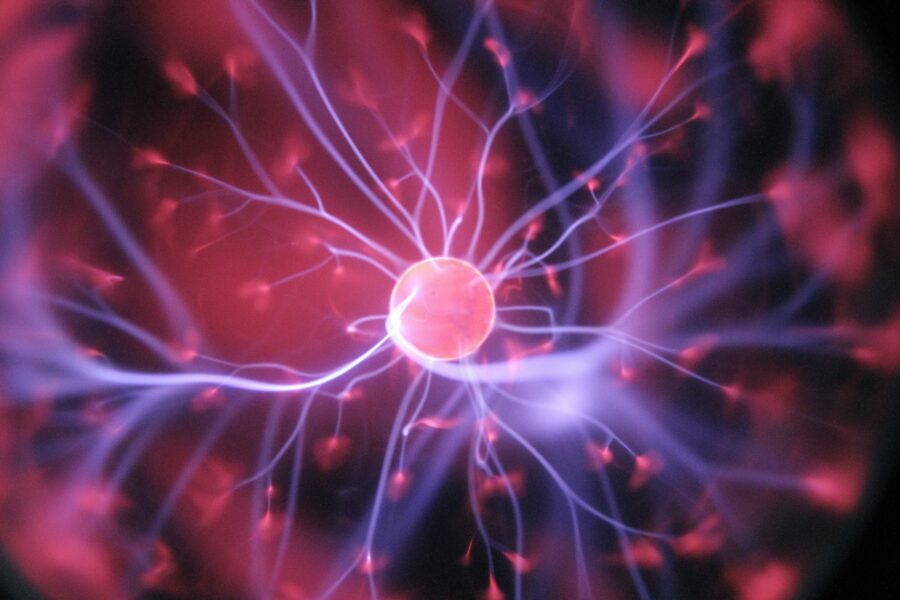
The hippocampus receives input from other regions of the brain which collect information from our environment. Our experience of life is how memories are formed and subsequently stored.
However, the Japanese study indicates that if the hippocampus is receiving too much external information that induces stress, the Tob gene may be overwhelmed. Previous studies have also shown that prolonged stress causes various neurobiological changes in the hippocampus.
This means that the more often you experience stress, the less effective the Tob gene is. If the Tob gene does not regulate new memory cells, the build-up in our long-term memory bank is filled with information that causes, fear, depression and anxiety.
So what causes fear and anxiety for you on a daily basis? And what can you do to alleviate stress and overcome anxiety and depression?